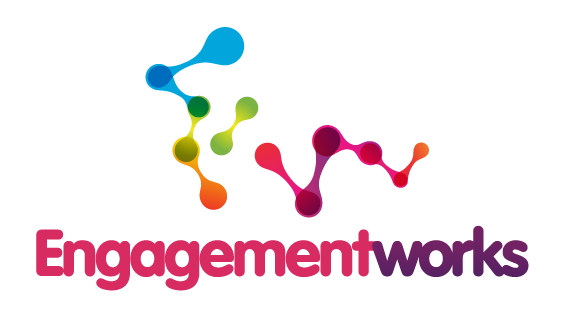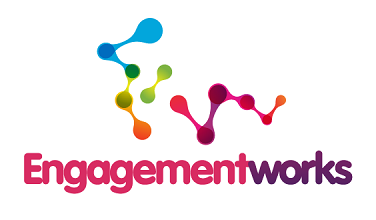Background
On 16 July 2015 I asked LinkedIn’s Community Engagement forum the following question:
There’s a bit of discussion going on at the moment about engagement spectrums. Some organisations (such as local government councils) choose to remove the “empower” section from their spectrums, which is probably worth a conversation in itself.
For the purposes of this conversation, I’m looking for some opinions and a discussion about the “inform” end of the spectrum and whether you think that that is actually “engagement”.
The responses posted to this discussion suggest that I am not the only community engagement practitioner around the world who has been thinking about this issue.
The results
As at 30 July (New Zealand time) there had been 74 posted contributions to this discussion (LinkedIn’s count of 77 includes several repeated posts). Some contributors posted more than once, sometimes responding to comments made by others. 21 people had also “liked” this discussion by that time. Subsequent contributions made since 30 July but have not been materially different to earlier ones so have not been included in this analysis.
Feedback was multinational (note that the count reflects the number of contributions made, not the number of contributors).
On 16 July 2015 I asked LinkedIn’s Community Engagement forum the following question:
There’s a bit of discussion going on at the moment about engagement spectrums. Some organisations (such as local government councils) choose to remove the “empower” section from their spectrums, which is probably worth a conversation in itself.
For the purposes of this conversation, I’m looking for some opinions and a discussion about the “inform” end of the spectrum and whether you think that that is actually “engagement”.
The responses posted to this discussion suggest that I am not the only community engagement practitioner around the world who has been thinking about this issue.
The results
As at 30 July (New Zealand time) there had been 74 posted contributions to this discussion (LinkedIn’s count of 77 includes several repeated posts). Some contributors posted more than once, sometimes responding to comments made by others. 21 people had also “liked” this discussion by that time. Subsequent contributions made since 30 July but have not been materially different to earlier ones so have not been included in this analysis.
Feedback was multinational (note that the count reflects the number of contributions made, not the number of contributors).
- Australians: 24
- Canadians: 10
- Americans: 9
- British: 24
- New Zealanders: 1
- Koreans: 2
- Irish: 2
- Tanzanians: 1
- Belgians: 1
- 32 contributions said Yes – “informing” was part of engagement
- 27 contributions said No – “informing” was not part of engagement
- 10 contributions were ambivalent and not able to be interpreted as a clear “yes” or “no”.
- The “spectrum” (presumably one of many engagement spectrums) doesn’t have a beginning or an end.
- It needs to be done properly to support other engagement processes that may be in play.
- Informing and engaging are different colours on the same spectrum.
- Informing and engaging need to happen together.
- People can be engaged without requiring them to respond.
- Yes, but informing cannot be the only component of engagement.
- Yes, provided it is done in good faith and allows for feedback.
- Yes, provided feedback received is heeded.
- Yes, people can’t be made to participate.
- Yes, depending on how the informing is done. It must be done at every stage of an engagement process.
- Informing rarely stands alone from other engagement components.
- Yes, if it is intended to elicit a response.
- Yes, but it has to meet a community’s needs.
- Yes, it has to be part of a wider engagement approach.
- Yes, it’s a key part of an engagement process throughout.
- Yes. It’s central to all levels of engagement.
- Yes, informing is a key part of widely accepted engagement spectrums.
- Yes, informing is key to generating a reaction from citizens.
- Yes, informing is a legitimate engagement objective and needs to be done well.
- Yes, it’s a necessary first step for engagement.
- Yes, you cannot engage unless people first receive information.
- Thinking of “informing” as engagement is a slippery slope.
- No, but it’s an important adjunct.
- No, but it’s important for scene setting.
- No, “inform” implies one-way information exchange.
- No, engagement requires active involvement.
- “Informing” can only passively seek feedback.
- No, but informing is a key component of an engagement process.
- No, as it can lead to tunnel vision.
- No, it’s a key component but not in itself legitimate engagement.
- No, informing is transactional and not interactional.
- No, a ladder approach to engagement is too linear. Engagement is more complex than that.
- No, “informing” has no associated interaction.
- No, informing is an engagement outcome not an objective.
- No, through engagement organisations should seek to engage, listen and empower.
- No, informing doesn’t engage people in thoughtful decision-making.
- With no response mechanism, there is no engagement.
- No, “engagement” is democratic and participatory.
- Opinions about the legitimacy of “informing” as an engagement tool, based on the views expressed by contributors to this discussion, appear to be clearly and evenly split. While diverse, the sample of contributors should not be interpreted as being representative of the universe of community engagement practitioners.
- Engagement spectrums, such as the ones published by the OECD and IAP2, are well used by many practitioners. Other visual tools, such as Arnstein’s Ladder, are also used and were referenced by several participants. Some people see these and use these differently to others, which was clear in several of the responses made.
- Some people, particularly ladder fans, see engagement processes as linear, moving up or down, or from left to right across a range of engagement options. Others see these processes or objectives as being integrated. These perspectives clearly shape the value or legitimacy that practitioners attach to “informing”.
- Words also mean different things to different people and, without clear context, can sometimes confuse, rather than clarify. “Inform” in this context appears to be such a casualty. Some participants have imbued their definition of this word with tinges of “collaboration”, others have taken a clear dictionary-based approach. That, combined with how people overlay the context of an engagement spectrum, seems to be the major contributor as to whether they then see “informing” as a legitimate part of engagement processes, or not.


 RSS Feed
RSS Feed
